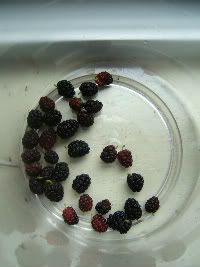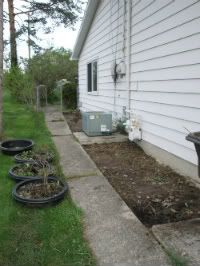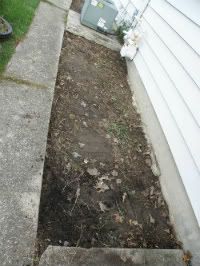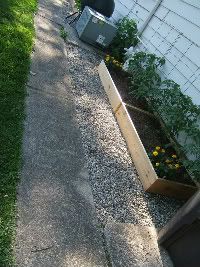Farmland being treated like a stock-market bid, on which savvy businessmen hope to make as much money as possible.

I am often inspired by my local paper, but this article has been haunting me ever since I read it a week ago. To me, it represents so much of what has gone wrong in our agricultural system. Farmland being treated like a stock-market bid, on which savvy businessmen hope to make as much money as possible, just strikes me as fundamentally screwed up. We are talking about land, of which the planet only has so much, that has the power to grow food and feed everyone. This land is being regarded as a means to an end–profit, and profit only. This disturbing article fits into the bigger picture of our farmland being used to grow primarily corn and soybeans–which in turn fits into the whole industrialized food system. Perhaps, as the article states, the idea of businessmen–often with absolutely no knowledge or interest in actually tending the land and growing food–coming in to take over farmland is nothing new. But, I am seeing these kinds of stories with new eyes, and a new discomfort.
Investors up on the farm as property values soar
Bernard Condon | Associated Press
Braden Janowski has never planted seeds or brought in a harvest. Yet when 430 acres of Michigan cornfields were auctioned last summer, it was Janowski, a brash, 33-year-old software executive, who made the winning bid.
It was so high – $4 million, 25 percent above the next-highest – that some farmers stood, shook their heads and walked out. But Janowski figures he got the land cheap.
“Corn back then was around $4,” he says from his office in Tulsa, Okla., stealing a glance at prices per bushel on his computer.
Prices rose to almost $8 a bushel in June but are now closer to $7.
The return of the gentleman farmer is shaking up the American heartland. In the past, investors with few or no ties to farming have been called sidewalk farmers, suitcase farmers or absentee landlords.
Lured by high crop prices, they wager big on a patch of earth – betting that it’s a smart investment because food will only get more expensive around the world.
They’re buying wheat fields in Kansas, rows of Iowa corn and acres of soybeans in Indiana. And though farmers still fill most of the seats at auctions, the newcomers are growing in number and variety – a Seattle computer executive, a Kansas City lawyer, a publishing executive from Chicago, a Boston money manager.
The value of Iowa farmland has almost doubled in six years. In Nebraska and Kansas, it’s up more than 50 percent.
“I never thought prices would get this high,” says Robert Huber, 73, who just sold his 500-acre corn and soybean farm in Carmel for $3.8 million, or $7,600 an acre, triple what he paid for it a decade ago.
“At the price we got, it’s going to take a long time for him to pay it off – and that’s if crop prices stay high.”
Buyers say soaring farm values simply reflect fundamentals. Crop prices have risen because demand for food is growing around the world while the supply of arable land is shrinking.
At the same time, farmers are shifting more of their land to the crops with the fastest-rising prices, which could cause those prices to fall – and take the value of farms with them.
And even if crop prices hold up, land values could fall if another key prop disappears: low interest rates.
When the Federal Reserve cut its benchmark rate to a record low in December 2008, yields on CDs and money market funds and other conservative investments plunged, too. To many Wall Street experts, the hunt for alternatives explains the rapid rise in gold, art, oil – and farms.
Those who favor farms point out that, unlike gold, art and oil, you can collect income while you own a farm. You can sell what you grow or hand the fields over to a farmer and collect rent.
In Iowa, investors pocket annual rent equivalent to 4 percent of the price of land. That’s a 60-year low but almost 2.5 percentage points more than average yield on five-year CDs at banks.
But that advantage could disappear quickly. If the Fed starts raising rates, farmland won’t look nearly as appealing.
As with stocks, U.S. farms can swing wildly in value along with the economy. Despite the fragile recovery, though, farm prices are nearing records now, capping a decade of some of the fastest annual price jumps in 40 years. In Iowa, farm prices rose 160 percent in the decade through last year to an average $5,064 per acre, according to Iowa State University.
Thomas Hoenig, head of the Federal Reserve Bank of Kansas City, oversaw dozens of bank failures when a farm boom turned bust 30 years ago. Today, he suggests prices may be in an “unsustainable bubble.”
Veteran bond trader Perry Vieth doesn’t think so. Vieth, formerly with Pan Agora Asset Management in Boston, started buying farms with his own money five years ago, when buyers with no farming experience were rare.
Now he’s buying for 71 wealthy investors. Ceres Partners, his private investment fund, owns 65 farms, almost half bought since November. He says he’s returned 15 percent annually to his investors overall.
Though Vieth says prices in some places have climbed too high – he won’t buy in Iowa, for instance – he says the price of farms elsewhere will rise as big money managers start seeing them as just another tradable asset like stocks or bonds and start buying.
“When Goldman Sachs shows up to an auction, then I’ll know it’s time to get out,” he says.
Locally
Outsiders’ interest in farms nothing new
Ritter Cox, an agent with Schrader Real Estate & Auction Co., said last October his Columbia City company sold a 5,000-acre Kansas farm to a Wall Street hedge fund.
“They turn around and rent it out and get the income from it,” Cox said. “It’s an excellent investment and better return than a lot of other” ways.
Randy Hardy grows corn, soybeans and wheat in Allen and Huntington counties. He and his brother work four farms. Hardy said city slickers scooping up farmland is nothing new.
“In the ’70s, you had quite a few doctors that were buying farmland,” Hardy said. “We are aware of it, but it’s hard for us to do anything about it. It’s been going on for quite a while.”
– Paul Wyche, The Journal Gazette
link to original article

 The kitchen is one of the most active rooms in any home, both in terms of time spent inside of it and the amount of energy that is required to operate it. A kitchen for a family of four typically represents anywhere between 20 and 40 percent of its annual household energy consumption, which means that any steps taken to reduce energy use in the kitchen can have a lasting impact. Below are three quick steps to making any kitchen a bit more eco-friendly.
The kitchen is one of the most active rooms in any home, both in terms of time spent inside of it and the amount of energy that is required to operate it. A kitchen for a family of four typically represents anywhere between 20 and 40 percent of its annual household energy consumption, which means that any steps taken to reduce energy use in the kitchen can have a lasting impact. Below are three quick steps to making any kitchen a bit more eco-friendly.













































